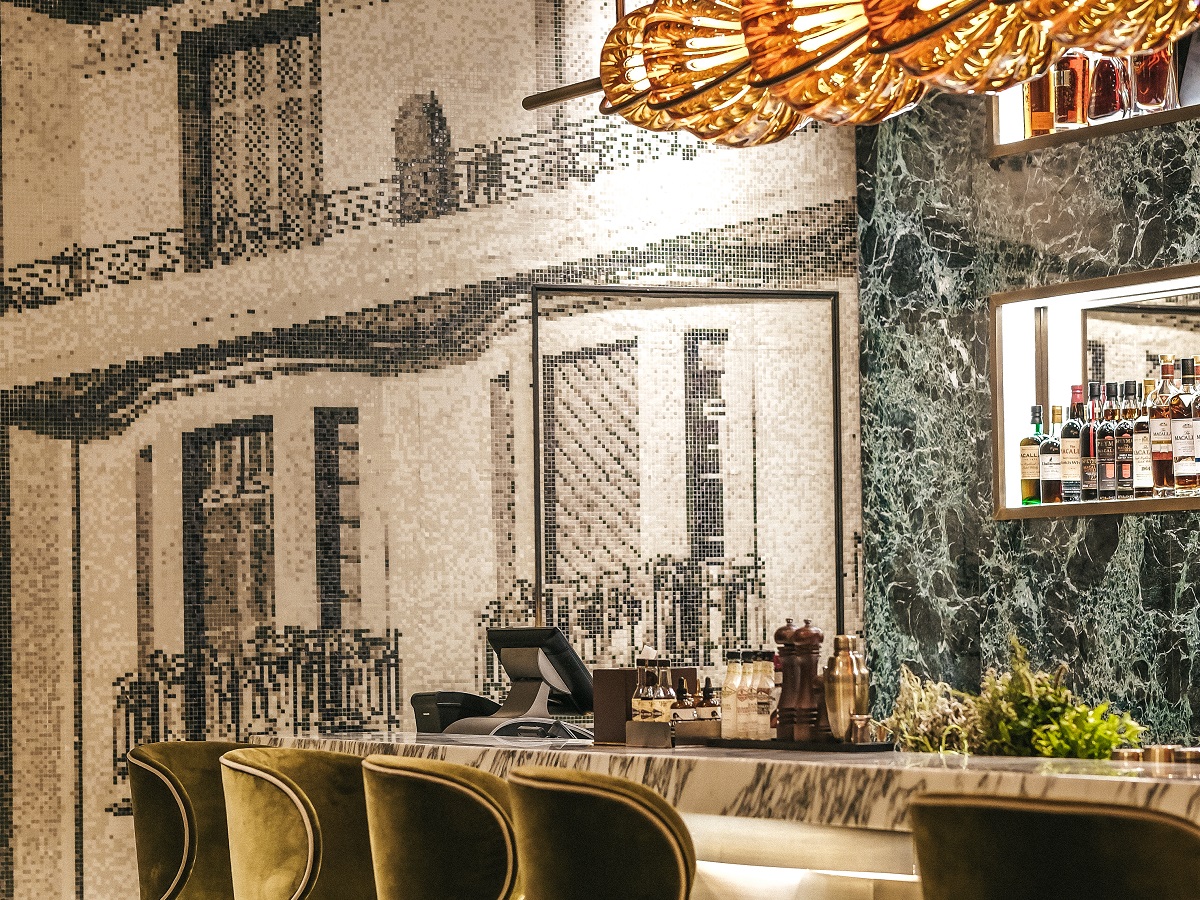
A First-Person Journey Through the New Royal Mansour
Casablanca has always lived in my mind as a city of contrasts—modern ambition framed by the nostalgia of a place that never entirely reveals itself at once. But nothing prepared me for seeing it through the lens of the new Royal Mansour Casablanca, a property that doesn’t merely reopen: it redefines the very idea of urban Moroccan luxury.
I landed expecting a polished restoration. What I found was something far more deliberate: a 23-storey tribute to a city that refuses to stand still.
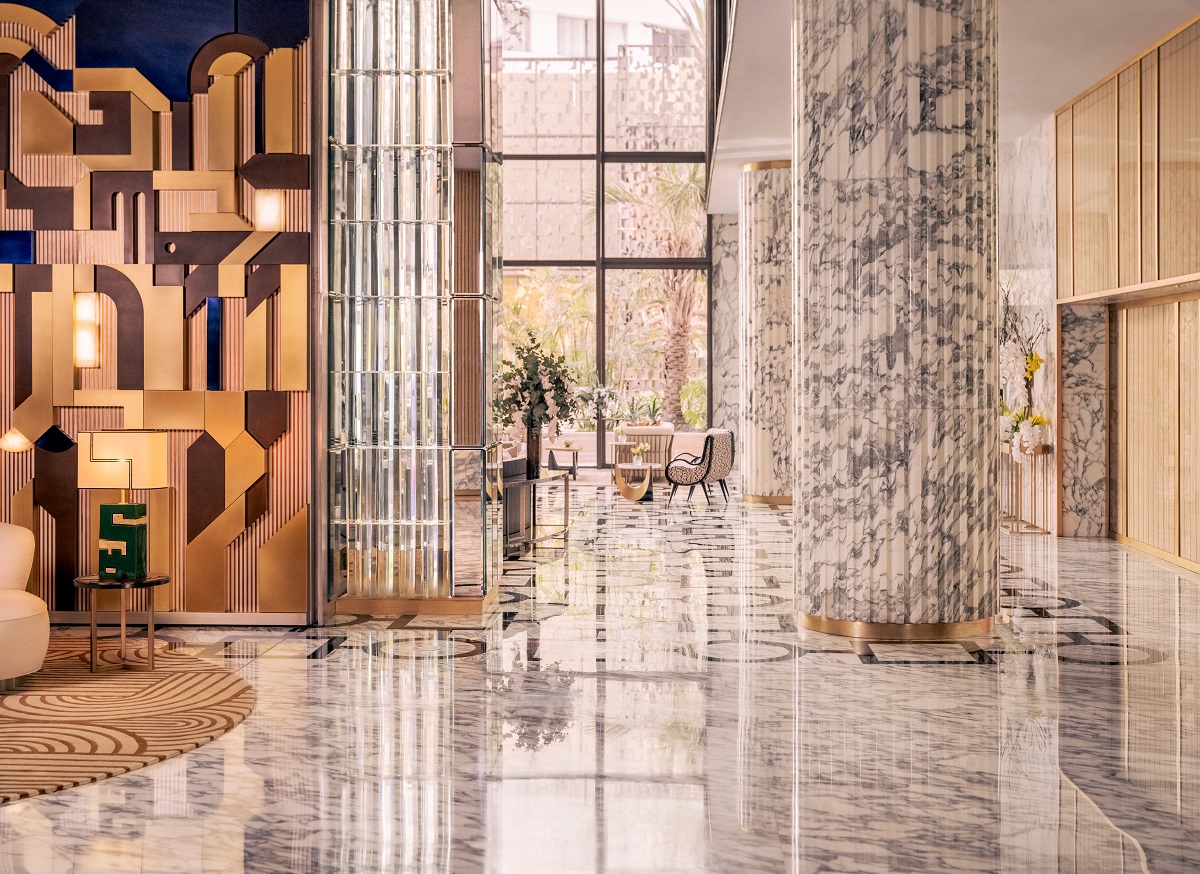
Arrival: Where the Past Learns to Breathe Again
From the street, the hotel’s façade feels like a restored memory—sleek, vertical, and confident. Inside, the lobby delivers a different kind of welcome: a burst of art, architecture, and quiet symbolism. The centerpiece, a monumental sculpture of Casablanca seen from above, glints under soft light—glass, mirror, copper—an aerial map turned into a contemporary relic.
Then comes the surprise: a paludarium, half-terrarium, half-aquarium, home to thousands of tiny creatures. Light shifts as if following the rhythm of the sun. Above it, hundreds of crystal fish hang suspended in mid-air, shimmering like urban constellations. It’s theatrical, yes—but in a way that feels earned.
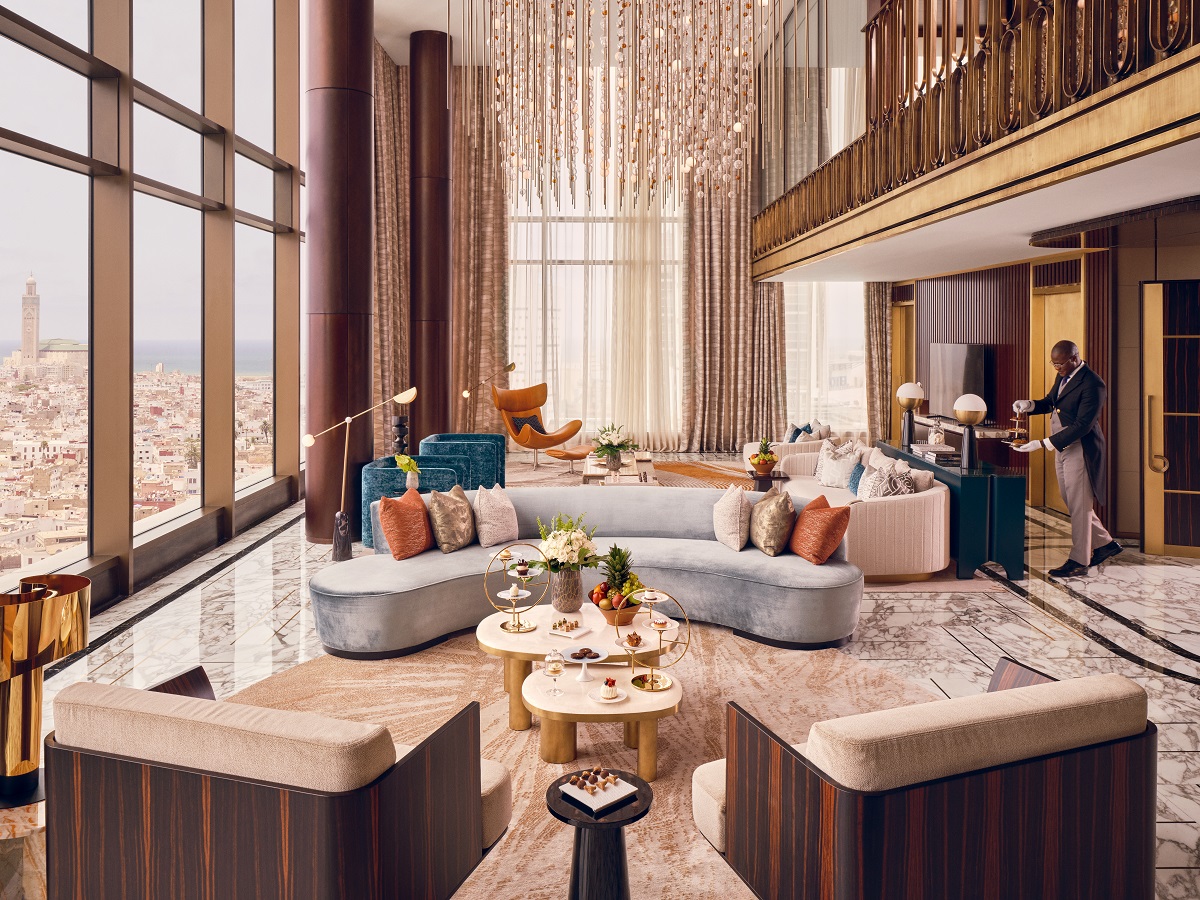
A Suite with a View and a Purpose
My room became a lesson in how a hotel can balance modernity with intention. Marble, polished wood, geometric textiles—the familiar Art Deco vocabulary is there, but refined into something quieter, more architectural.
Small details reveal the hotel’s obsession with craft: heated bathroom floors, leather-wrapped telephones, a dressing room with a silent watch winder, hidden chargers inside a desk that opens like a magician’s drawer. The night light activates with a soft glow the moment you move—subtle, functional, almost invisible.
At sunset, Casablanca stretched beneath my window like a sheet of illuminated script—minarets, Art Deco towers, cranes, markets, the Atlantic breathing in the background. A city forever rewriting itself.
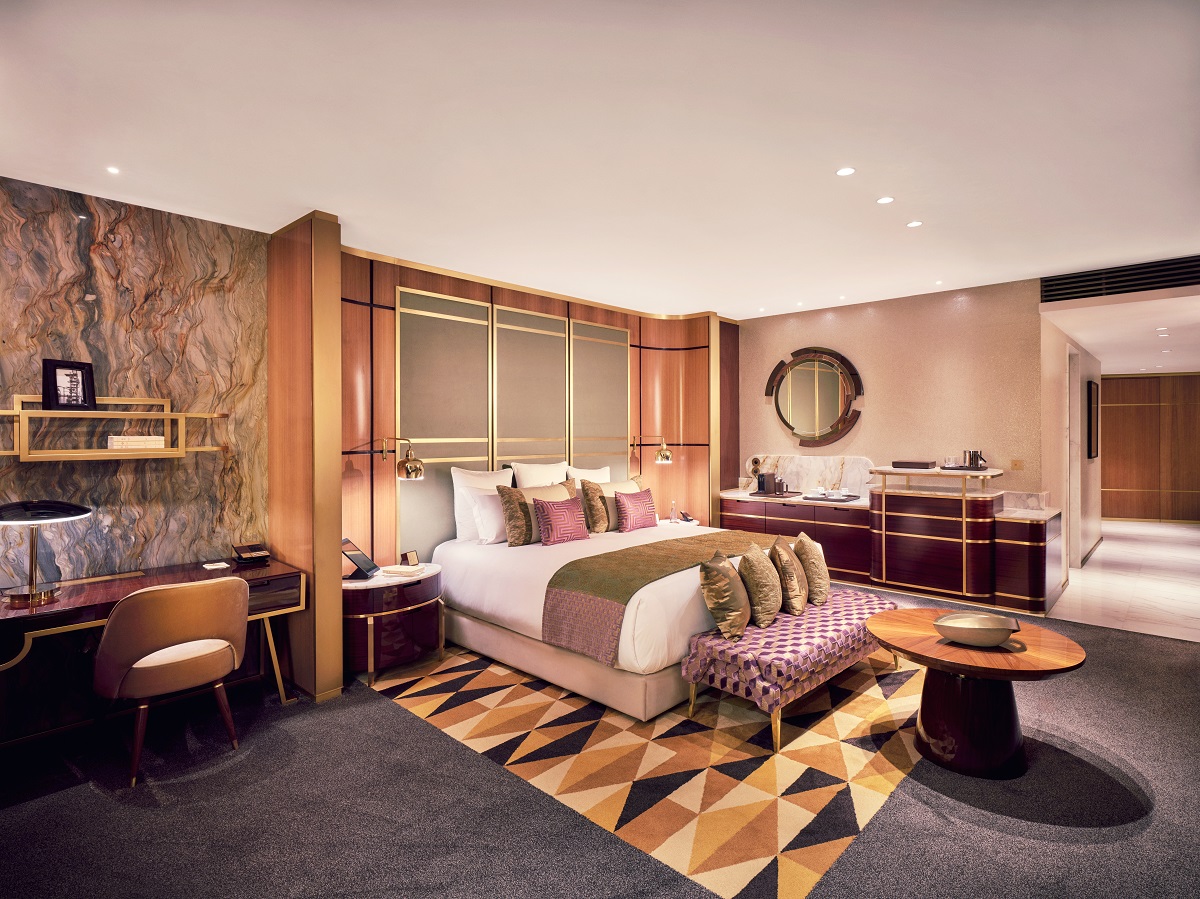
Three Restaurants, One Skyline, Infinite Flavours
The Royal Mansour’s culinary trio is one of the hotel’s strongest arguments.
La Grande Table Marocaine on the 23rd floor offers Moroccan cuisine with the generosity of tradition and the precision of haute gastronomie. Blue lobster cooked in its shell, fisherman-style small coastal fish, tajines, pastillas—the classics appear, but sharpened, elevated. The panoramic view over the Atlantic makes everything taste slightly more dramatic.
La Brasserie by Éric Frechon provides the opposite sensation: a cosmopolitan heartbeat. This is Casablanca with a Parisian accent—white porcelain, mirrored walls, and tables that stretch into long conversations. Crêpes Suzette flambéed at the table, oysters from Oualidia, servers moving like a refined choreography. It’s timeless without trying to be nostalgic.
And then there is the Sushi Bar by Keiji Matoba, a study in purity. Hand-blown glass cherry blossoms float above the counter, while Matoba’s team works with silent concentration. Omakase becomes a dialogue: flavor, discipline, restraint.
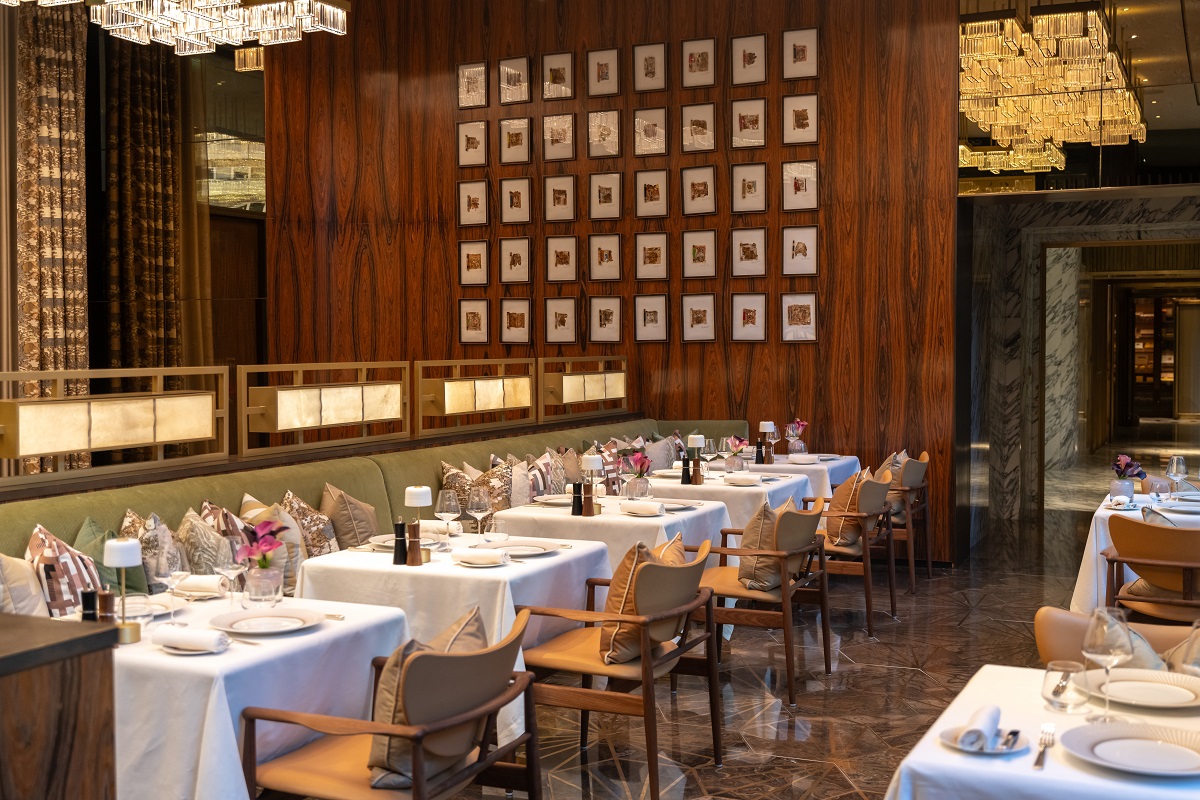
Le Rooftop: Mediterranean Air Above Casablanca
But the crowning achievement—both vantage point and intention—is Le Rooftop, a Mediterranean restaurant perched on the 23rd floor and offering what might be the most commanding view of Casablanca.
I ascended for an early lunch: floor-to-ceiling windows revealing the white city stretching out, the minaret of the Hassan II Mosque rising like an exclamation mark, and the Atlantic shimmering beyond. The setting is more than scenic; it becomes part of the menu.
The cuisine at Le Rooftop is built for explorers of taste: a Mediterranean map infused with Middle-Eastern inspiration, Italian warmth, and Asian clarity. A ceviche of white fish with mango and harissa vinaigrette opened the meal—fresh, bright, and quietly daring. Then came a risotto with Persian lemon and Roman artichokes, an unexpected combination that worked with surprising harmony.
The experience evolves as the day moves. What begins as a serene lunch becomes, in the evenings, a space alive with music and conversation, a DJ weaving rhythm into the skyline. On Sundays, the mood shifts again into a leisurely brunch above the city—seasonal produce, shared plates, and a view that feels almost cinematic.
Seated on the leafy terrace, I felt suspended between earth and sky, cuisine and horizon, memory and invention.

The Spa: Where the City Finally Pauses
On the fifth floor, the spa opens like an antidote to Casablanca’s restless energy. The counter-current pool sits beneath a glass ceiling that makes it feel almost outdoors. The hammam—marble, steam, ritual—anchors the space in Moroccan tradition.
Two floors of wellness, from Hydrafacial to cold plasma technology, from traditional scrubs to hair treatments by Leonor Greyl. The feeling is not futuristic; it’s simply exact. Everything has a purpose, nothing is rushed.
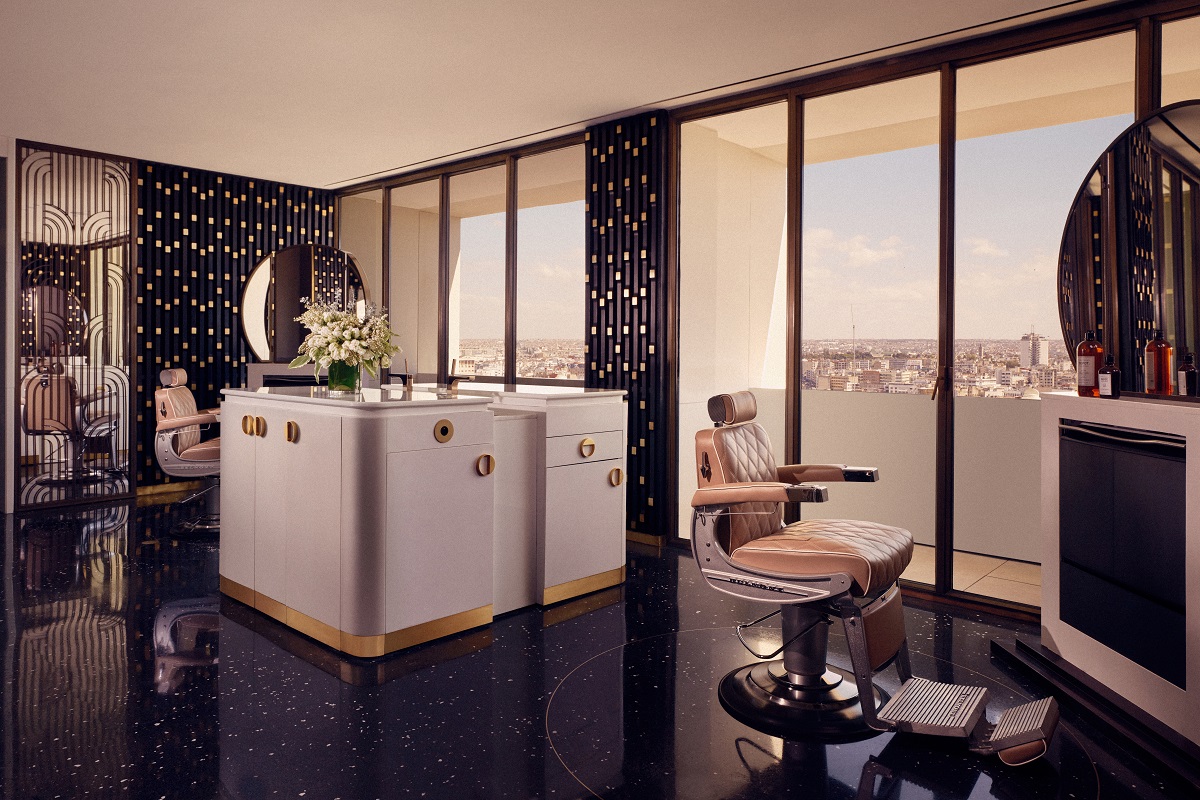
Between Two Towers and a City in Motion
One of my favorite moments came from crossing the glass bridge that connects the hotel’s twin towers. Suspended in the air, Casablanca unfolded beneath me—the markets, the port, the cranes, the Great Mosque, the wild mix of Art Deco and street art and modern geometry. It’s the kind of view that reminds you why the city shapes people who refuse to stand still.
The Royal Mansour captures that spirit. It honors the past without being trapped by it; it embraces the future without performing it.
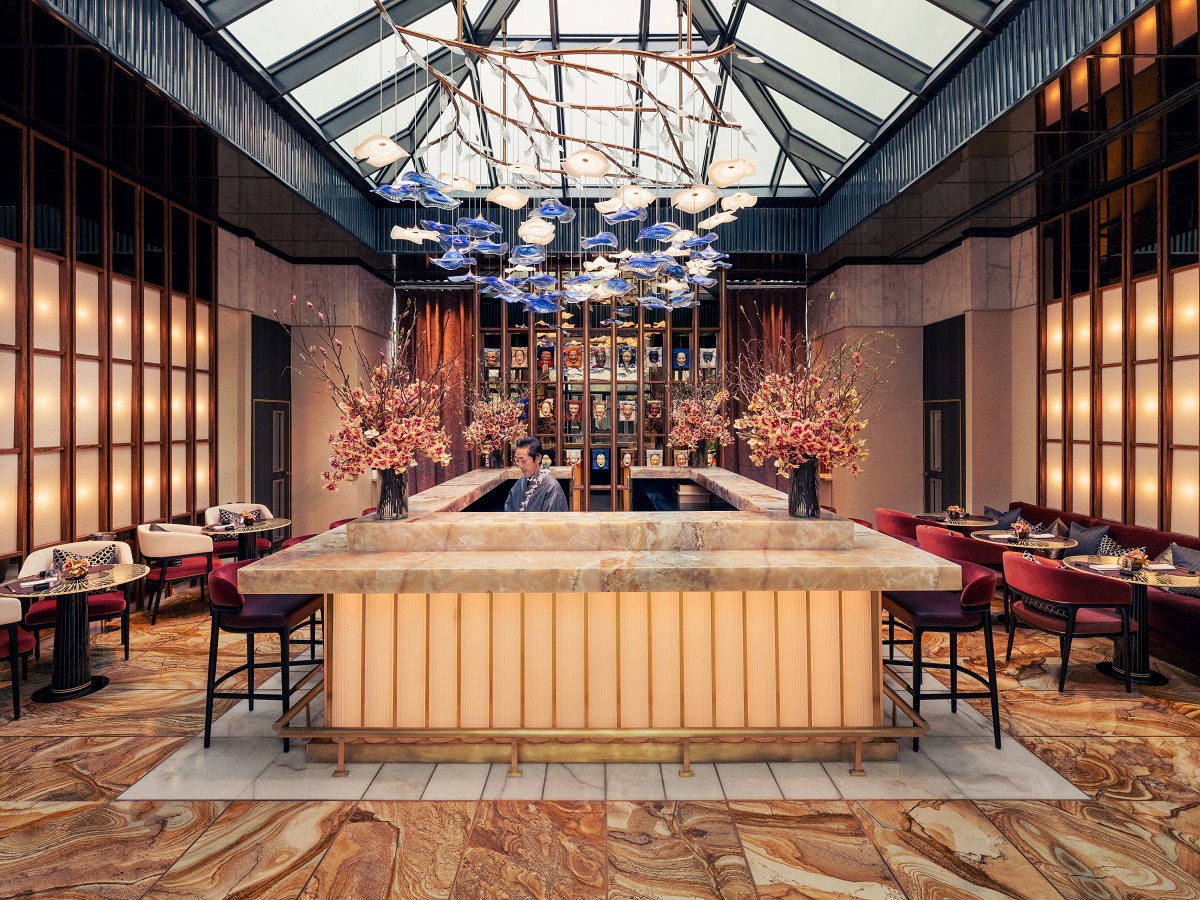
A Farewell in Brass and Shadows
On my last night, I sat at the bar—a space with the quiet grandeur of an American lounge from another age. Marble, mosaics, a chandelier casting warm shadows. The bartender prepared a signature cocktail with the calm assurance of someone who understands this place is built on ritual.
Outside, Casablanca moved fast. Inside, everything slowed just enough.
Leaving the hotel, I realized the Royal Mansour Casablanca doesn’t just raise the bar for Moroccan luxury—it widens the vocabulary. It’s a bold, finely tuned answer to a city that thrives on contradiction.
A place where history isn’t restored—it’s renegotiated.
And where a legendary address, once asleep, has opened its eyes again.
